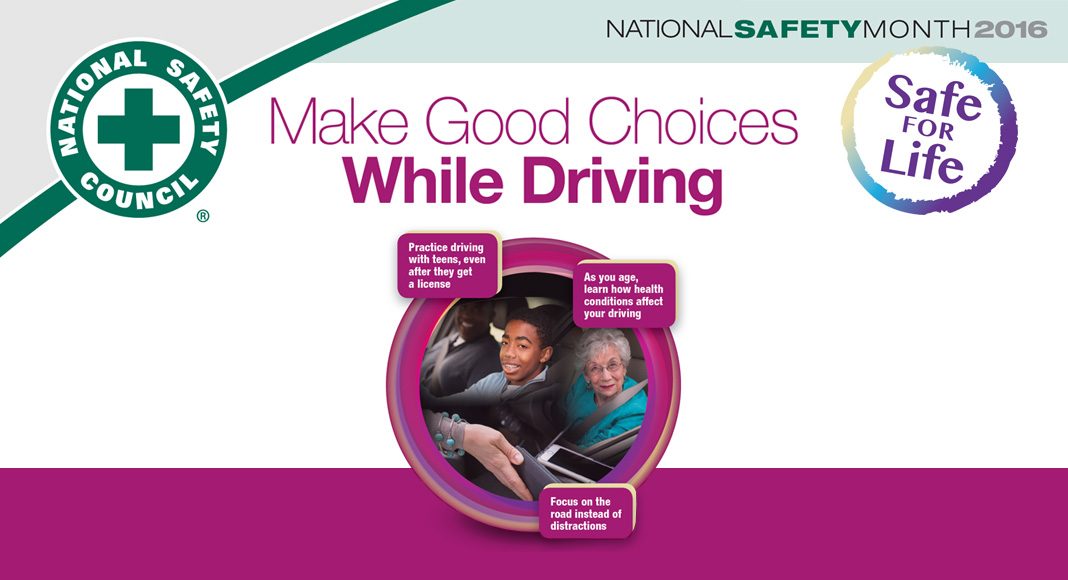In the United States June is National Safety Month, focusing on reducing leading causes of injury and death at work, on the roads, in homes and communities.
The campaign will run throughout the month, with each week concentrating on a different topic.
Week 1: Stand Ready to Respond
Week 2: Be Healthy
Week 3: Watch Out for Dangers
Week 4: Share Roads Safely
Below is information on sharing roads safely provided by the National Safety Council, organizers of National Safety Month.
Make safe choices
The nation’s roadways are a place of constant risk, with millions of vehicles moving alongside one another. Since it’s impossible to control the choices of everyone on the road, we need to be defensive drivers. Getting behind the wheel is a time for patience and focus – qualities that can help you avoid a collision should someone else make a bad decision.
Be distraction-free
Thousands of crashes have involved distracted driving. Anything that prevents a driver from being able to safely operate the vehicle should be avoided.
- Never use a cell phone behind the wheel, even hands-free
- Pre-set your navigation system and music playlists before driving
Avoid impairment
An average of one alcohol-impaired driving fatality occurs every 53 minutes in the U.S. But impairment can also include being under the influence of drugs – both legal and illegal.
- Designate an alcohol and drug-free driver or arrange alternate transportation
- Check the side effects of your medications before getting behind the wheel
Check your speed
Speeding was a factor in 28 per cent of all traffic fatalities in 2014. Speeding reduces the amount of time a driver has to react in a dangerous situation to avoid a crash.
- Always allow adequate time to get to your destination
- Adjust your speed for weather conditions – in certain situations the legal speed limit may be too fast
Rest up
Our lives are busy and sometimes we try to fit in too much. This can be very dangerous behind the wheel if we don’t get enough rest. Most adults need 7-8 hours of sleep a day, while teens need 9-10 hours.
- Create a regular sleep pattern so you can get plenty of rest
- On long trips, take regular breaks to avoid fatigue
Help teens and children
Driving is a complex skill that demands judgment and experience, which can take years to acquire. Teen drivers need as much experience as possible, and parents should help provide that by driving with their teens on a regular basis. Do not allow teens to drive with their friends. A single young passenger can increase a teen driver’s fatal crash risk 44 percent. The safety of child passengers is the responsibility of the driver, and requirements change as kids grow.
- Make certain child safety seats are properly installed, that children are correctly secured and that the seats are appropriate to the child’s height, weight and developmental level
- Regardless of age, make sure all passengers are correctly belted before setting off
Visit the National Safety Council website for more information on National Safety Month, including resources, tips and posters for all four safety themes.



















